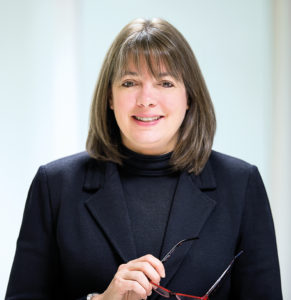Insurance carrier and InsurTech executives asked how they spark imagination in their workforces say culture is the anchor. Strategies that include putting Innovation Champions inside the business, events like hackathons, and training on technology, agile and design-thinking approaches move them forward.

“Innovation is part of our DNA. One of our core values is ‘Be the Next,'” said Sarah Doll, chief people officer of Snapsheet, a virtual claims provider founded in 2011. “We live this value every day—from product development to customer service.”
Wendy Davis Johnson, chief communications and culture officer for Hamilton Insurance Group, said her young company “committed to building a new kind of insurance and reinsurance company” since its founding. “This includes establishing a culture that enables creative thought and attracts the talent to execute—throughout the company.”
“We understand that a diverse, inclusive culture is more likely to produce truly innovative solutions than a homogenous one,” she continued. “Our diversity and inclusion statement is ‘Open minds open doors’—meaning that we recognize, embrace and learn from our differences. Diversity of all kinds reveals fresh perspectives, ignites innovation and enriches everyone.”
At Zurich North America, “fostering an innovation mindset with each employee is a critical first step” for a company striving to be “at the leading edge of understanding emerging trends and delivering innovative customer solutions,” said Anurag Batta, head of strategy, innovation, business development and communications. “Innovation is not one person or team’s job at Zurich. Everyone has a role to play. It’s part of our culture.”

Champions and Special Teams
Introducing another theme common among the executives’ emailed responses, Batta noted that a dedicated innovation team is part of an innovation-enabling strategy, and that the team gets support from “Innovation Champions embedded within the business.”
Likewise, at CSAA Insurance Group, there are more than 100 “change champions” promoting innovation and serving as resources for employees and leaders, according to Marie Andel, executive vice president of people and culture at CSAA Insurance Group. “At CSAA Insurance Group, a AAA Insurer, actually creating the vision for a team focused solely on innovation was a really big move toward [our innovation] journey, and we started by hiring our chief strategy and innovation officer, Debbie Brackeen, in late 2016. Under her leadership, our new strategy and innovation division was tasked with developing our innovation strategy, not just within our core insurance business but [for] new areas we might not be thinking of,” Andel said.
Snapsheet’s Doll said that the InsurTech has “a team dedicated to reviewing processes and workflows within the claims process—identifying areas to improve and streamlining how we operate. This approach has been one of the drivers that has powered Snapsheet to break down barriers for carriers and make a significant impact on the way claims are processed,” she added.

While Hamilton’s Johnson didn’t say anything about setting up a separate team, she did note that where innovators sit is an important step in releasing a free flow of ideas. “We’ve designed our spaces to support teamwork and collaboration. Our software developers and computer scientists sit with our underwriters, actuaries and accountants. We encourage our employees to question how and why we do what we do, believing there should be no sacred cows if we’re to accomplish our mission of writing the future of risk,” she said.
Experiment and Hack It Up
Executives representing the smallest and largest respondents said experiments, hackathons and innovation competitions are part of their innovation toolkits.
“Being still a relatively small team at 30 people, we use our size as an advantage,” wrote Chad Nitschke, chief executive officer of Bunker, a startup broker focused on independent contractors and small businesses. “At any given time we’re running at least a handful of experiments, and those can change weekly or monthly. If an experiment works, we put more resources behind it. If it doesn’t, we either iterate or move to the next. This empowers team members to take action.”
“Having an idea is the easy part. Creating a culture where people feel supported to act on those ideas on their own is the harder but more important part,” he added.

At Snapsheet, Hack Days take place every other Friday, Doll reported. And hackathons are even possible on a global scale, according to Monique Shivanandan, Chubb’s global chief information officer, who described a global employee innovation competition that happens annually. “Chubb employees from around the world form teams and bring their ideas to leadership for consideration. Ideas need to be both actionable and scalable, and the ultimate prize is having Chubb invest in the winning product or service.
“In 2018, more than 100 teams submitted ideas for the first round of regional competitions. Finalists travel to Chubb’s New York City office and present ideas to the company’s chairman and CEO as well as other senior leaders.” She believes the competitions inspire more than creativity, building team camaraderie as well.
Zurich taps into the ideas of its global workforce with an Idea Center—a crowdsourcing platform. “In just a few months since its launch, we have captured more than 500 creative and practical ideas,” Batta reported.
Sharing Knowledge
In addition to sharing new ideas, several executives cited the importance of sharing knowledge.

At CSE Insurance Group, “we have done a lot to raise the general knowledge of technology within the company,” said Chief Information Officer Mark Chequer, suggesting that a grounding in tech is a good launchpad for innovation. “We have regular training on all Microsoft products—SharePoint, Skype, Teams, etc.—and we repeat these trainings usually over pizza and make it very interactive,” he said. “We also have regular tips of the week to keep people engaged.”
Chequer added that even a product called Wombat Security, which performs phishing tests, helps raise the overall focus of the company on technology. “We make this a fun exchange,” he said.
Specific to the IT team, CSE also conducts regular training sessions on advanced items like SQL and Tableau, as well as having regular guest speakers on specific subjects such as AI and machine learning on AWS. CSE also encourages training outside of what CSE offers.
At CSAA Insurance Group, Andel described a different type of training—innovation training for all employees, and more specific training for leaders aimed at sparking companywide innovation. The purpose, she said, is to teach techniques like “brainstorming, rapid prototyping, and how to be OK with sharing or presenting imperfect or incomplete work product.”

Other facets of the holistic approach are “a built-in ‘innovation exchange’ and an internal ‘innovation hub’ website” with resources, articles, toolkits and videos.
Today, the insurer is working to develop an agile mindset for the company while guiding the workforce to rally around dual goals of working “much more efficiently as an organization every day [and] simultaneously optimizing and growing our core business.” A key step in that process was putting the ideas into the company’s core values, Andel said. “We came up with a list of success drivers—key behaviors we want all of our employees to master, including two related to creating our future: ‘Innovate and Be Agile’ and ‘Continuously Develop and Grow.'”
Those success drivers are embedded in the annual performance review process. Each employee “is required to have an innovation goal—evaluating or revamping an internal process or looking at a new solution to an existing issue or challenge,” she said.
Bringing the Outside In
With innovation aspirations ranging from continuous improvement to disruptive, CSAA’s all-of-the-above approach also includes hackathons and agile pilots that employ design thinking and lean startup principles, according to Andel. “These are cross-departmental efforts focused on business problems.”
At Chubb and Zurich, efforts also reach beyond the companies. “Chubb is focusing on ‘bringing the outside in’

for our employees and exposing them to external innovation,” said Shivanandan. As an example, she said Chubb is partnering with the FinTech Innovation Lab NYC for the second year to mentor startups and increase our employees’ exposure to entrepreneurs, innovation and the rapid advances in InsurTech.
At Zurich, “we directly and proactively work with our customers and distributors to come up with new ideas and solve problems” using the Zurich Innovation Lab—”a tech-infused collaboration space,” Batta said. The space is the site of hackathons, brainstorming sessions and design sprints with employees, customers and distributors to solve challenges together.





















 Hong Kong Fire Reveals Contractor Safety Breaches, Residents’ Revolt
Hong Kong Fire Reveals Contractor Safety Breaches, Residents’ Revolt  Executive Utterances: On Presenting
Executive Utterances: On Presenting  Water Leaks, Frozen Pipes Top List of Small Business Claims: The Hartford
Water Leaks, Frozen Pipes Top List of Small Business Claims: The Hartford  Berkshire Hathaway Announces Leadership Appointments: New CEO at GEICO
Berkshire Hathaway Announces Leadership Appointments: New CEO at GEICO 



